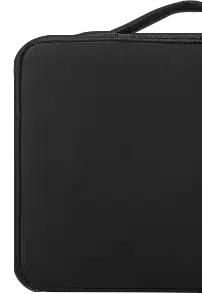What is a default password?
A default password, often preset in the system for initial device setup, plays a crucial role in computer, laptop, desktop, tablet, and smartphone security. Understanding the significance of changing default passwords is vital for safeguarding your digital devices. Enhance your computer and mobile device security by promptly updating default passwords, ensuring protection against potential unauthorized access and fortifying your overall online experience.
Why is it crucial to change default passwords?
Using the default password makes your device vulnerable. Since many people might know it, leaving it unchanged increases the risk of unauthorized access. Changing it adds a layer of protection, ensuring your device or system is more secure.
How can I change a default password?
Changing a default password varies depending on the device or system. Generally, you can do it through the settings or admin console. Access these options, locate the security or password section, and follow the instructions to set a new, unique password. It's a simple but effective step in securing your device.
Can I reuse passwords across different devices or accounts?
While it might be tempting for convenience, it's not recommended. Reusing passwords increases the potential damage if one is compromised. If a hacker gains access to one device or account, they could potentially access others. It's best practice to use unique passwords for each to maximize security.
What are the risks of using default passwords?
The primary risk is that default passwords are widely known, making it easier for malicious actors to gain unauthorized access to your device or system. This could lead to data breaches, privacy violations, or even control of your device. Changing default passwords is a simple yet crucial step in safeguarding your digital assets.
Does every device come with a default password?
Not all devices have default passwords, but many do. Devices like routers, cameras, and smart appliances often come with pre-set passwords for initial setup. It's essential to check the documentation or the device itself to identify if there's a default password and take steps to change it.
Could using a complex password really make a difference?
Yes, using a complex password significantly enhances your security. A complex password includes a mix of uppercase and lowercase letters, numbers, and symbols. This makes it harder for hackers to guess or use automated tools to crack your password. The more complex, the better.
What's the risk of leaving a default password unchanged on my router?
Leaving the default password on your router is risky because it's a gateway to your home network. If a hacker gains access, they could manipulate your network settings, monitor your online activities, or even launch more sophisticated attacks. Changing the default password on your router is a fundamental step in securing your entire home network.
Does changing a password frequently enhance security?
Yes, changing your password periodically adds an extra layer of security. Even if your password is strong, changing it regularly reduces the risk of it being compromised over time. It's like changing the locks on your doors – it makes it harder for anyone who may have gained unauthorized access to continue doing so.
What's the difference between a password and a passphrase?
While a password is typically a combination of characters, a passphrase is a sequence of words or a sentence. Passphrases are often longer and can be easier to remember while providing strong security. Using spaces and a mix of words, numbers, and symbols in a passphrase can create a robust defense against unauthorized access.
How do I create a strong password?
Creating a strong password involves a few key principles. Use a mix of uppercase and lowercase letters, numbers, and symbols. Avoid easily guessable information like birthdays or names. Make it at least 12 characters long. Consider using a passphrase for added security. The goal is to make it complex and unique to minimize the risk of being hacked.
Are password managers safe to use?
Yes, password managers are generally safe and can significantly enhance your online security. They generate and store complex, unique passwords for each of your accounts. This means you only need to remember one strong master password. If you keep your master password secure, using a password manager is a practical and secure way to manage your passwords.
Can I trust built-in password managers in browsers?
Built-in password managers in browsers are convenient, but their security depends on the overall security of your device and browser. While they offer a level of protection, dedicated password manager apps often provide additional features like secure password generation and more advanced encryption. If you opt for a browser's password manager, ensure your device's overall security is robust.
Would using two-factor authentication enhance my security even more?
Yes, two-factor authentication (2FA) adds an extra layer of security by requiring you to provide two forms of identification before accessing an account. This is often a password and a temporary code sent to your mobile device. Even if your password is compromised, the additional authentication step makes it significantly harder for unauthorized individuals to gain access.
How often should I update my passwords?
Regularly updating your passwords is a good security practice. Aim to change them at least every three to six months, especially for critical accounts like email, banking, or social media. This routine maintenance helps minimize the risk of unauthorized access and keeps your online accounts more secure.
What should I do if I forget a password?
If you forget a password, many platforms and services provide options to recover or reset it. This often involves confirming your identity through email, phone number, or security questions. If you've set up account recovery options in advance, the process is usually straightforward. Always ensure your recovery information is up to date to avoid potential access issues.
Are biometric authentication methods secure?
Biometric authentication, such as fingerprint or facial recognition, can provide a secure and convenient way to access devices or accounts. However, it's not foolproof. Biometric data can be compromised, and there have been cases of successful impersonation. It's advisable to use biometrics in conjunction with other security measures, like a strong password or 2FA, for enhanced protection.
Does the length of a password matter more than complexity?
Both length and complexity are crucial for a strong password. However, in some cases, length can be more important. A longer password, even if less complex, can be harder to crack than a shorter, more complex one. Aim for a balance – a lengthy password with a mix of characters – to ensure optimal security.
















